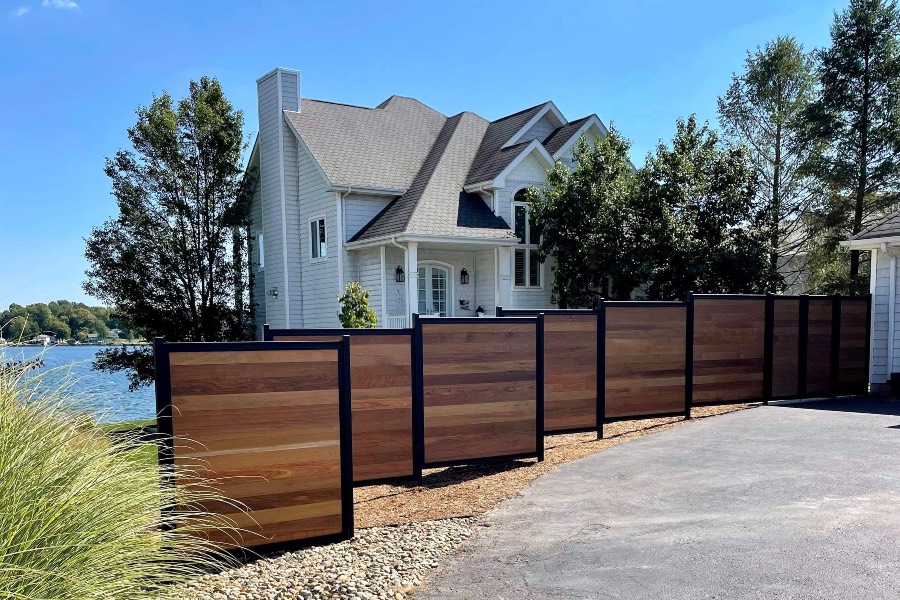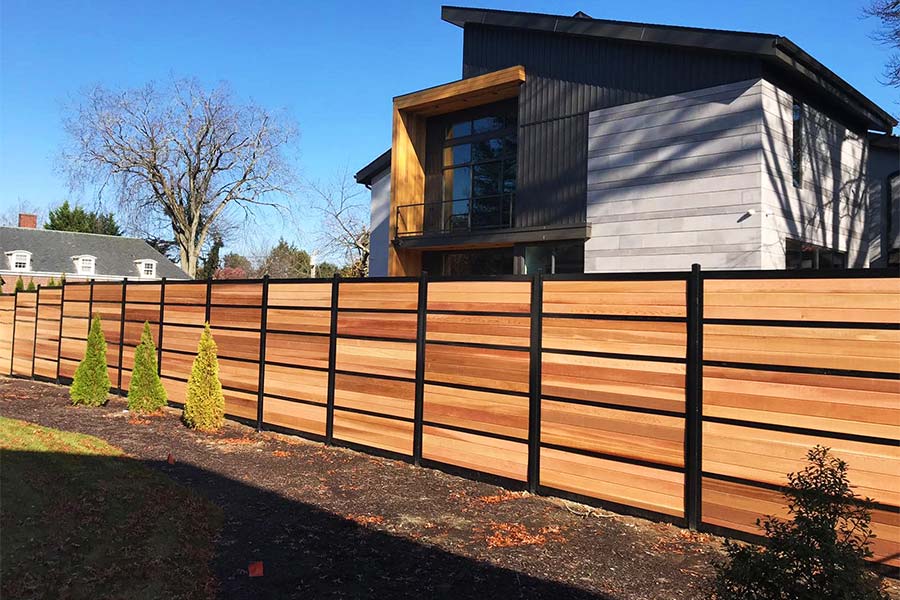All Categories
Featured
Before the installation process begins, it's essential to appropriately prepare your residential property to guarantee that whatever goes smoothly. Right here's an overview on just how to prepare your building for fencing installation.
In addition, check for any kind of below ground barriers like automatic sprinkler, irrigation pipelines, or energy lines. You can usually call your neighborhood utility firm to mark the locations of these underground functions to stop unintentional damages during installation. It's always best to make sure the ground is without obstructions before the specialist begins digging.
![]()
![]()
Verdict. Preparing your building for fence installation is a critical action in the procedure that can conserve you time, stress, and cash. By understanding local guidelines, marking property lines, clearing the installment location, and interacting with your neighbors, you can guarantee a smooth and successful installation. Making the effort to prepare appropriately will not only make the installment procedure less complicated but likewise result in a gorgeous, resilient fence that improves your residential property for years ahead.
- Examine Neighborhood Regulations and Permits. Prior to starting the physical prep work, it's critical to comprehend the regional laws bordering fencing installment. You might need to acquire a permit prior to setup or validate with your Homeowners Organization (HOA) if you live in a neighborhood with particular standards.
- Mark Your Residential Property Lines. Knowing precisely where your building lines are is important to ensure the fence is set up correctly. You don't desire to inadvertently develop part of your fence on your next-door neighbor's land, as this can cause conflicts. If you're unclear of your residential or commercial property lines, think about employing a specialist land surveyor to note them for you. Several property owners erroneously presume the borders are where fencings or sites already exist, yet having a main survey done can avoid pricey mistakes.
- Clear the Setup Location. Next off, you need to prepare the area where the fence will certainly be installed. These items can conflict with the fence installation procedure and might call for extra labor or devices to get rid of, which might increase costs and time.
In addition, check for any kind of below ground barriers like automatic sprinkler, irrigation pipelines, or energy lines. You can usually call your neighborhood utility firm to mark the locations of these underground functions to stop unintentional damages during installation. It's always best to make sure the ground is without obstructions before the specialist begins digging.

- Take Into Consideration Gain Access To for Setup Equipment. Throughout the fencing setup procedure, heavy devices such as miners, articles, or vehicles might need to access your residential or commercial property. Clearing up the path likewise helps to avoid damages to your lawn, landscaping, or any kind of frameworks near the installation area.
- Connect with Neighbors. If you're installing a fence on or near the home line, it's considerate to educate your next-door neighbors regarding the project beforehand. While this is not legitimately needed in all situations, offering your neighbors a heads-up can avoid misunderstandings and help maintain great connections. Some neighbors may have problems about the fence elevation, design, or possible obstruction of sights, so it's necessary to go over these details early while doing so. If you're functioning with a contractor, ask to be conscious of your next-door neighbor's residential property throughout installment.
- Select Your Fence Material and Style. Before installation starts, select the sort of fencing product and design you desire. There are different alternatives to select from, consisting of timber, plastic, aluminum, chain-link, and wrought iron, each with its cons and pros. Consider your goals for the fencing-- whether it's privacy, safety, appearances, or reduced upkeep-- and how each material suits your requirements. Furthermore, make certain to communicate your selection with the professional so they can prepare appropriately, ensuring they have all the needed products on hand for a smooth setup.

- Get ready for the Last Touches. If you have actually decided for a decorative or personalized style, the setup group might require added time to make sure whatever aligns as prepared. It's a good idea to evaluate the fencing once the installment is complete to make certain every little thing meets your assumptions.
Verdict. Preparing your building for fence installation is a critical action in the procedure that can conserve you time, stress, and cash. By understanding local guidelines, marking property lines, clearing the installment location, and interacting with your neighbors, you can guarantee a smooth and successful installation. Making the effort to prepare appropriately will not only make the installment procedure less complicated but likewise result in a gorgeous, resilient fence that improves your residential property for years ahead.
Latest Posts
Discover Outstanding Vehicle Maintenance Care in Chicago – Drive with Confidence
Published May 27, 25
1 min read
Uncover Cost-Effective Auto Repairs with Montclare’s Limited-Time Service Specials
Published May 26, 25
1 min read
Find Brake Repair & More: Complete Services Guide from Montclare Auto Repair
Published May 26, 25
1 min read
More
Latest Posts
Discover Outstanding Vehicle Maintenance Care in Chicago – Drive with Confidence
Published May 27, 25
1 min read
Uncover Cost-Effective Auto Repairs with Montclare’s Limited-Time Service Specials
Published May 26, 25
1 min read
Find Brake Repair & More: Complete Services Guide from Montclare Auto Repair
Published May 26, 25
1 min read